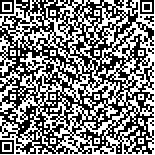章微微,叶瑞忠,李厥宝,等.超声引导下气囊扩张术在脑卒中后环咽肌失弛缓症中的应用[J].中华物理医学与康复杂志,2020,42(4):317-321
扫码阅读全文

|
| 超声引导下气囊扩张术在脑卒中后环咽肌失弛缓症中的应用 |
|
| |
| DOI:10.3760/cma.j.issn.0254-1424.2020.04.006 |
| 中文关键词: 超声引导 脑卒中 环咽肌失弛缓 舒适度 喉部疼痛 |
| 英文关键词: Ultrasound guidance Stroke Cycloparyngeal achalasia Comfort Throat pain |
| 基金项目:浙江省医药卫生科技项目(2018257026) |
|
| 摘要点击次数: 5609 |
| 全文下载次数: 6586 |
| 中文摘要: |
| 目的 观察超声引导下气囊扩张术在脑卒中后环咽肌失弛缓症中的应用。 方法 选取符合纳入标准的脑卒中后环咽肌失弛缓症患者38例,均经吞咽X线荧光透视检查(VFSS)诊断为环咽肌失弛缓症,采用随机数字表法随机分为对照组和治疗组,每组19例。对照组采用常规经口球囊扩张术,治疗组在超声引导下行经口气囊扩张术,即超声定位环咽肌后经口插入导尿管,定位导尿管头端位置后,注入空气,进行气囊扩张治疗。每2日治疗1次,治疗期间记录每次治疗时间、扩张次数,并评估患者舒适度、喉部疼痛情况;分别于治疗前和治疗2周后(治疗后),对2组患者行洼田饮水试验、SSA评分、VFSS评分比较。 结果 治疗组患者的每次治疗时间(23.53±1.81)min、扩张次数(4.79±0.42)次、患者舒适度(73.32±6.32)分、患者喉部疼痛VAS评分(0.89±0.74)分,明显优于对照组[(26.00±2.19)min、(3.89±0.94)次、(55.00±7.83)分、(1.95±1.03)分],组间差异均有统计学意义(P<0.05)。经洼田饮水试验患者临床疗效评定,2组患者治疗后的总有效率均为100%,但治疗组治疗后的显效率为78.95%,明显优于对照组(31.58%),且组间差异有统计学意义(P<0.05);治疗组和对照组患者的SSA评分[(22.58±1.22)和(24.05±0.71)分]、VFSS评分中的咽期评分[(2.58±0.51)和(2.11±0.32)分]及误咽情况[(3.58±0.51)和(3.16±0.37)分]组间比较,差异均有统计学意义(P<0.05)。 结论 超声引导下行气囊扩张术可以缩短每次治疗时间、增加扩张次数、提高患者舒适度、减轻喉部疼痛情况,提升治疗效果。 |
| 英文摘要: |
| Objective To observe the effects of applying ultrasound-guided balloon dilatation in the treatment of post-stroke cyclopthyroid achalasia. Methods Thirty-eight stroke survivors with cyclopneaful achalasia were divided into a control group (n=19) and an experimental group (n=19). All had been diagnosed with cycloparyngeal achalasia using videofluoroscopic swallowing study (VFSS). The controls were treated with conventional oral balloon dilatation, while the experimental group underwent ultrasound-guided oral balloon dilatation. The treatment was performed once every 2 days. During the treatment period, the durations and the number of expansions were recorded, and the patient′s comfort and throat pain were evaluated. The Kubota drinking water test (KDWT), standardized swallowing assessment (SSA) scoring and VFSS scoring were compared before and after the 2 weeks of treatment. Results The average daily duration of expansions in the experimental group was significantly less than in the control group and their number was significantly greater. Comfort and larynx pain were also significantly better in the experimental group. The effective rate in the KDWT was 78.95% in the treatment group, significantly higher than the control group′s 31.58%. Significant differences were also found in the average SSA scores, VFSS pharyngeal phase scores and in the incidence of achalasia between the experimental and control groups. Conclusions Using ultrasound to guide balloon dilatation can shorten the operation, reduce the throat pain involved and allow for more expansions, greater comfort and thus more effective treatment. |
|
查看全文
查看/发表评论 下载PDF阅读器 |
| 关闭 |